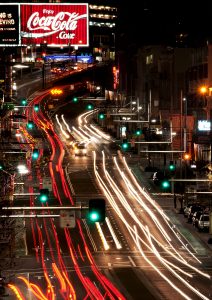The success of any website or app really boils down to one thing: how it feels to use. If people can navigate your site easily, find what they’re looking for, and get things done without frustration, they’re far more likely to stick around—and come back. But when the experience is confusing, clunky, or leaves some users behind? That’s when you lose them.
At its core, good UX design is about making sure everyone can use your product—regardless of ability, device, or familiarity. The best experiences don’t just work for some; they work for all.
We’ve put together a practical checklist to help you design with accessibility in mind—covering visual, auditory, motor, and cognitive needs. And we’ll point you toward helpful tools and resources so you can keep learning, keep improving, and keep building digital experiences that truly welcome everyone.
The Fundamentals of Accessible UX
Accessibility is about designing for how people actually live and interact—not just for some perfect, idealized user. It’s about making space for the full range of human experiences, because that’s who’s showing up at your digital doorstep. And when you zoom out, the impact becomes clear: over 16% of the world’s population lives with a significant disability. When you keep that in mind from the start, the end result isn’t just more inclusive—it’s better for everyone.
And yes, the benefits are very real:
- You’ll reach more people
- Build stronger trust with your audience
- Lower your legal risks
- And create a smoother, more enjoyable experience across the board
But to get there, it helps to understand how accessibility and usability work together.
Accessibility vs. Usability
Accessibility and usability go hand in hand, but they aren’t quite the same thing. Accessibility means people can use your site—regardless of ability. Usability means they want to. It’s the difference between building a ramp and making sure the door is easy to open once you get there. When both are in place, you’re not just meeting a requirement—you’re delivering a great experience.
So how do you do that in practice?
In the sections ahead, we’ll walk through four key areas to focus on: visual, auditory, motor, and cognitive accessibility. Each one connects to the WCAG POUR principles—Perceivable, Operable, Understandable, and Robust—which are all about making digital content work well for as many people as possible, in as many ways as possible.
Visual Accessibility: Making Your Content Clear
When it comes to digital experiences, what people see—and how clearly they see it—matters. Strong accessible design means your content shows up well for everyone, no matter their vision or viewing environment. Whether someone’s using a screen reader, navigating with magnification tools, or just scrolling on their phone in the sun, your design choices can make a big difference.
Color and Contrast: Give Every Element a Voice
Color does a lot of heavy lifting in design, but it shouldn’t have to carry meaning on its own. Good contrast helps your content stand out and stay legible in all kinds of settings—from dark rooms to bright sidewalks. Use tools like WebAIM Contrast Checker to spot trouble areas before your users do.
Instead of just using red to show an error, pair it with an icon and a message that says what’s going on. That way, everyone—regardless of how they see color—gets the same info. And skip putting important text over photos or gradients. It might look nice, but it often makes things harder to read.
Try this: View your layout in grayscale. Can you still tell what’s what? If not, it’s time for a few tweaks.
Text and Typography: Keep It Clean and Comfortable
Fonts don’t just carry words—they carry the experience. Stick with simple, sans-serif fonts like Arial, Helvetica, or Open Sans. They’re easier to read and less likely to cause eye strain. Avoid fancy decorative fonts for body copy, and go with a minimum of 16px for body text. Line height should feel breathable—somewhere around 1.4 to 1.6x the font size—so your words don’t feel cramped.
And remember, people should be able to zoom in up to 200% without a loss of content. That’s not just a nice-to-have—it’s part of WCAG’s requirements.
Quick test: Zoom way in and try navigating with just a keyboard. Everything should still be readable, usable, and scroll in one direction.
Images and Media: Describe What Matters
Images aren’t just decoration—they carry meaning, emotion, and context. But that only works if everyone gets to experience them. That’s where alt text comes in. For each image, ask yourself: What is this doing here?
If it’s decorative, mark it with empty alt text (alt=""). If it’s showing something important—like a process, a chart, or an instruction—give it a short, clear description. And for complex visuals? Offer a more detailed breakdown nearby or link out to a longer description.
Heads up: Avoid embedding key text inside images. If you have to, make sure that the same info is also available as live text on the page.
Links and Structure: Build a Clear Path
“Click here” doesn’t cut it anymore. Link text should be clear and specific—like “Download the full pricing guide” or “View shipping options.” This gives screen reader users meaningful context and helps anyone scanning your page understand exactly where a link will take them.
But clarity isn’t just about links—it’s about how the entire page is structured.
Use semantic headings (H1 to H6) to create a strong, logical outline. That helps screen reader users and keyboard navigators alike. And if you want to go a step further, use ARIA landmarks (like role= "main" or role= "navigation") to give even more structure to your layout.
Try this: Tab through your site or listen to it with a screen reader. If the page sounds confusing out loud, it probably reads that way too.
Auditory Accessibility: Sound That Speaks to Everyone
Audio can bring depth to your content—but only if it’s accessible. Make sure all multimedia includes captions or transcripts. This isn’t just about supporting users who are d/Deaf or hard of hearing—it’s about meeting people where they are: whether they’re in a crowded café, a quiet office, or scrolling with the sound off.
Captions should be accurate, well-timed, and include important background sounds like [music] or [laughter] when they add meaning. Bonus points if you also let users control playback speed, jump to specific moments, or pause when needed.
Skip the surprise: Don’t autoplay audio or video. And if it starts automatically, make sure there’s an easy-to-find pause or mute button.
If your design relies on voice commands, always offer another way to engage—like buttons, text input, or keyboard shortcuts. Voice should be an option, not a barrier.
Motor Accessibility: Let Everyone Navigate Their Way
Not everyone uses a mouse. For some users, navigating your site with a keyboard—or assistive tools like switch controls—is their primary method. That’s why motor accessibility is so important.
Your site should be fully usable with just a keyboard. That means:
- A logical tab order that follows the flow of the page
- Visible focus styles that clearly show where the user is
- Accessible modals that keep focus inside until they’re closed
- A skip link to let users jump past repeated content
Touch targets need to be big enough—at least 44px by 44px—and spaced well so people don’t hit the wrong button by accident. And don’t rely on hover-only tooltips. Make sure the same info shows up when elements get keyboard focus or a tap.
Test it out: Try using your site with only the keyboard. You’ll quickly spot any dead ends or frustrating traps.
Cognitive Accessibility: Make It Clear, Make It Work
Cognitive accessibility is about reducing mental strain. It’s for users who may be neurodivergent, have memory or learning differences, or just want a simpler, calmer experience (which, honestly, is all of us sometimes).
Consistency is key. Stick with familiar UI patterns and avoid switching up layouts too often. Too many options on one page? That can be overwhelming. Break things down. Keep it focused.
Tips that go a long way:
- Use plain, conversational language
- Break content into bite-size chunks
- Add helper text or examples near form fields
- Use bullet points and clear headers to help users scan
Avoid flashy carousels, blinking elements, or countdown timers that can’t be paused. If a timer is necessary—say for a session timeout—give users a heads-up and a way to extend their time.
Pro move: Offer a simplified or “reading mode” view for content-heavy pages. It can make a big difference in comprehension and comfort. These types of accessible design choices often benefit all users, not just those with cognitive disabilities.
Accessible Design Checklist
Keep this quick-reference checklist close at hand:
▪ Strong color contrast (4.5:1 minimum)
▪ No reliance on color alone for important information
▪ Legible, scalable fonts and adequate spacing
▪ Descriptive alt text for images
▪ Clear, descriptive link text
▪ Proper heading structure (H1–H6)
▪ Keyboard navigable with logical tab order
▪ Captions and transcripts for all multimedia
▪ Accessible media playback controls
▪ Large, spaced interactive elements
▪ Consistent layout and navigation
▪ Plain language instructions
▪ Flexible time limits for tasks and forms
Accessible Design Never Clocks Out
You’re already doing the work—asking better questions, designing more thoughtfully, and looking at your site through more than one lens. That’s what leads to lasting change.
There’s no final destination when it comes to accessible design. But every shift in your design process—every adjustment, every decision made with someone else’s experience in mind—moves the web in the right direction.
And if you ever want backup or a fresh set of eyes, 216digital is here to help. We offer accessibility briefings to give you clarity, confidence, and a plan to move forward.



